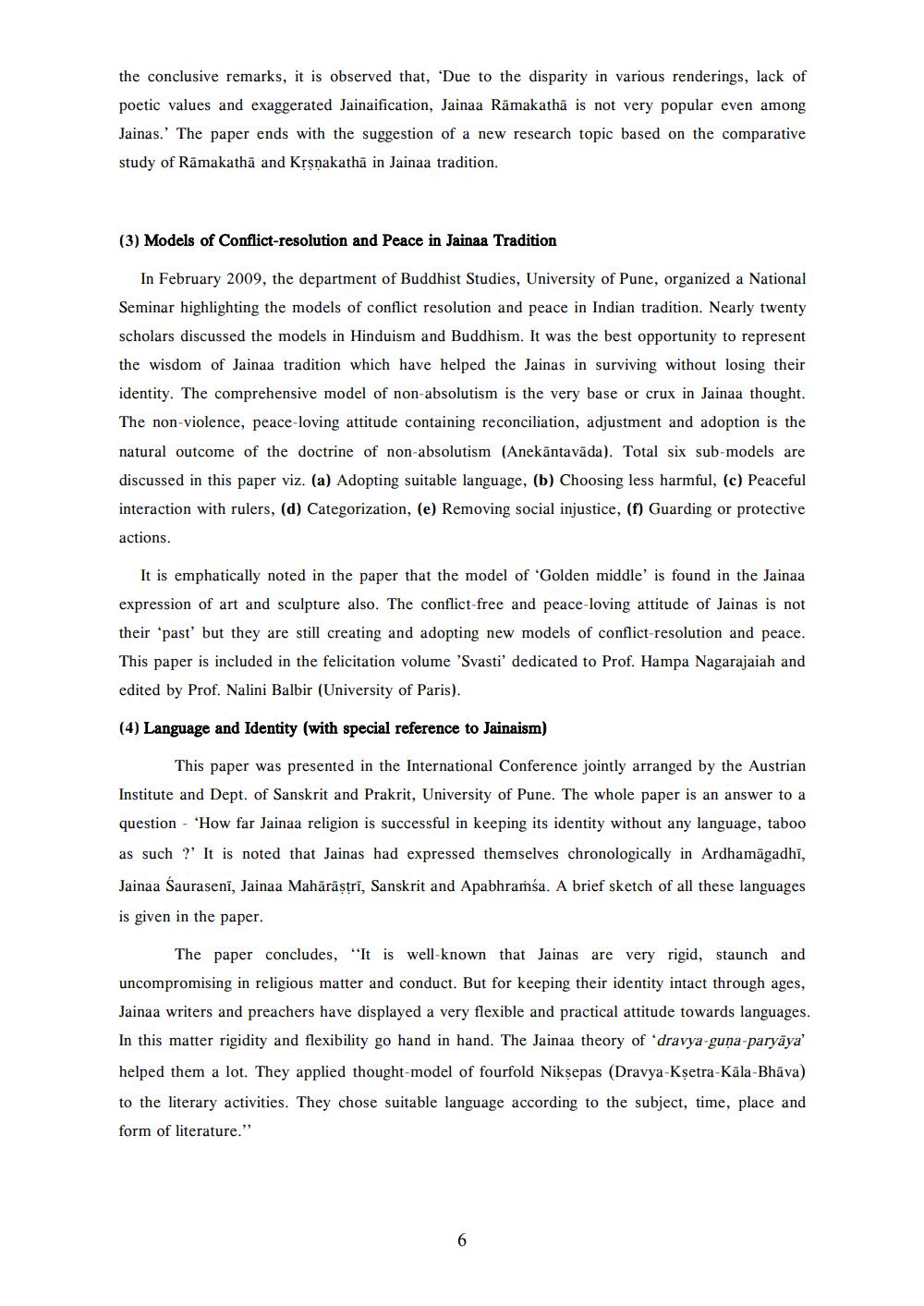Book Title: Collected Research Papers in Prakrit and Jainology Vol 02 Author(s): Nalini Joshi Publisher: University of Pune View full book textPage 6
________________ the conclusive remarks, it is observed that, 'Due to the disparity in various renderings, lack of poetic values and exaggerated Jainaification, Jainaa Rāmakathā is not very popular even among Jainas.' The paper ends with the suggestion of a new research topic based on the comparative study of Rämakatha and Krsnakatha in Jainaa tradition. (3) Models of Conflict-resolution and Peace in Jainaa Tradition In February 2009, the department of Buddhist Studies, University of Pune, organized a National Seminar highlighting the models of conflict resolution and peace in Indian tradition. Nearly twenty scholars discussed the models in Hinduism and Buddhism. It was the best opportunity to represent the wisdom of Jainaa tradition which have helped the Jainas in surviving without losing their identity. The comprehensive model of non-absolutism is the very base or crux in Jainaa thought. The non-violence, peace-loving attitude containing reconciliation, adjustment and adoption is the natural outcome of the doctrine of non-absolutism (Anekāntavāda). Total six sub-models are discussed in this paper viz. (a) Adopting suitable language, (b) Choosing less harmful, (c) Peaceful interaction with rulers, (a) Categorization, (e) Removing social injustice, (f) Guarding or protective actions. It is emphatically noted in the paper that the model of 'Golden middle' is found in the Jainaa expression of art and sculpture also. The conflict-free and peace-loving attitude of Jainas is not their 'past' but they are still creating and adopting new models of conflict-resolution and peace. This paper is included in the felicitation volume 'Svasti' dedicated to Prof. Hampa Nagarajaiah and edited by Prof. Nalini Balbir (University of Paris). (4) Language and Identity (with special reference to Jainaism) This paper was presented in the International Conference jointly arranged by the Austrian Institute and Dept. of Sanskrit and Prakrit, University of Pune. The whole paper is an answer to a question - 'How far Jainaa religion is successful in keeping its identity without any language, taboo as such ?' It is noted that Jainas had expressed themselves chronologically in Ardhamāgadhi, Jainaa Sauraseni, Jainaa Mahārāstrī, Sanskrit and Apabhramsa. A brief sketch of all these languages is given in the paper. The paper concludes,"It is well-known that Jainas are very rigid, staunch and uncompromising in religious matter and conduct. But for keeping their identity intact through ages, Jainaa writers and preachers have displayed a very flexible and practical attitude towards languages. In this matter rigidity and flexibility go hand in hand. The Jainaa theory of 'dravya-guna-paryāya' helped them a lot. They applied thought-model of fourfold Niksepas (Dravya-Ksetra-Kāla-Bhāva) to the literary activities. They chose suitable language according to the subject, time, place and form of literature."Page Navigation
1 ... 4 5 6 7 8 9 10 11 12 13 14 15 16 17 18 19 20 21 22 23 24 25 26 27 28 29 30 31 32 33 34 35 36 37 38 39 40 41 42 43 44 45 46 47 48 49 50 51 52 53 54 55 56 57 58 59 60 61 62 ... 170
